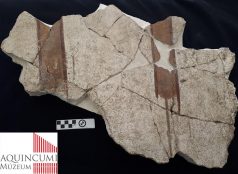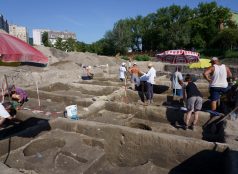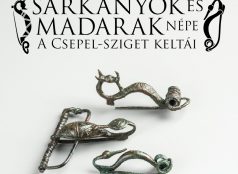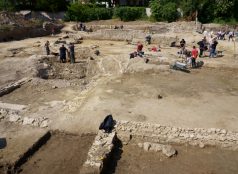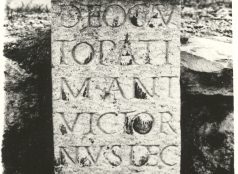Laser cleaning of a Mithras shrine wall painting fragment
Blog
We had a highly contaminated fragment of a wall painting found in the Mithras shrine at the Aquincum legionary fortress in 1979 cleaned using a laser. The laser cleaning procedure was carried out by stone sculptor-conservator Dr Ivett Kisapáti (Carter & Carter Ltd., www.carterart.hu).
Forty-centimetre-thick time capsule from the Middle Bronze Age
Blog
The remains of a dozen archaeological periods have been identified at the site of the former Óbuda Buszesz distillery. The scientific analysis of the freshly unearthed remains of a house gives us an insight into previously unknown dimensions of Bronze Age life. Report by the excavation’s lead archaeologist, Gábor Szilas.
The people of dragons and birds – interview with the curator
Blog
The temporary exhibition of the Budapest History Museum’s Aquincum Museum presents the most exciting finds from the cemetery at the northern tip of Csepel Island used by the Celts for over two hundred years. Interview with the curator, archaeologist Attila M. Horváth.
Uncovering a new part of the city of the dead
Blog
The number of people buried in Óbuda’s largest ancient cemetery could be on the order of 100,000. A new section of the former necropolis has now come to light thanks to preventive excavations at 68-84 Bécsi Road.
NOMEN EST OMEN
Blog
The name is a sign, as the ancient saying goes. Indeed, a name can tell us a lot. Our surname for instance can indicate noble descent, the place where our ancestors lived, or the jobs that they had. But how was it like in Roman times? What does a Roman name tell us? Let’s meet one of ancient Aquincum’s residents, Marcus Antonius Victorinus.
